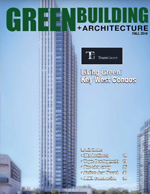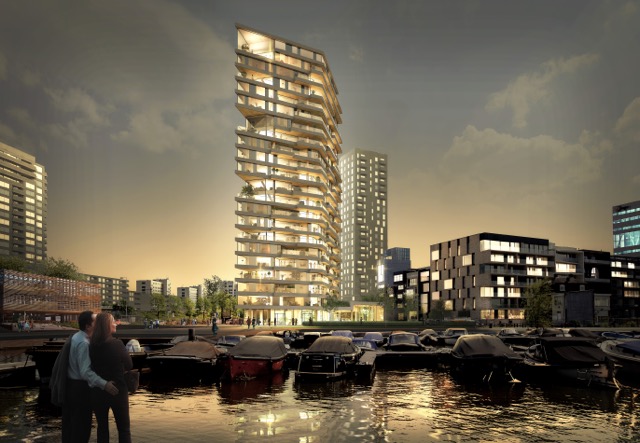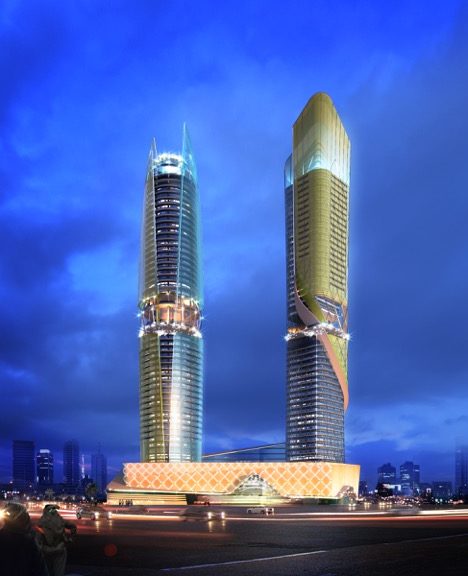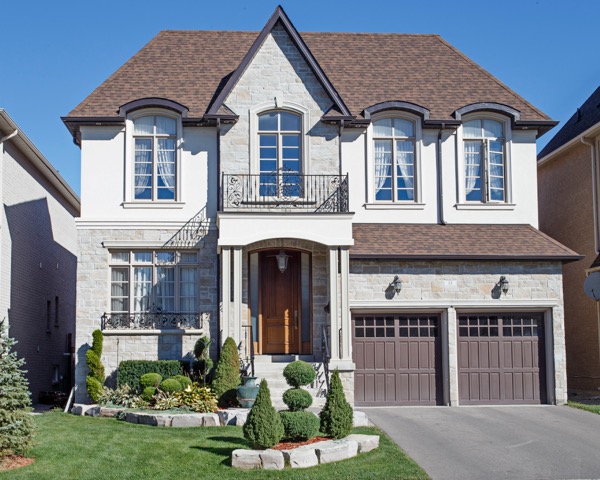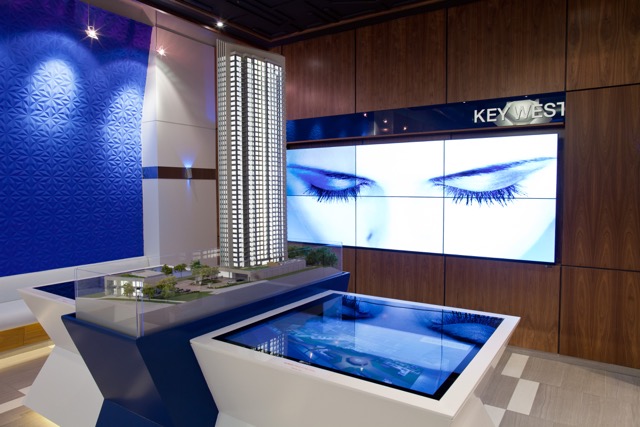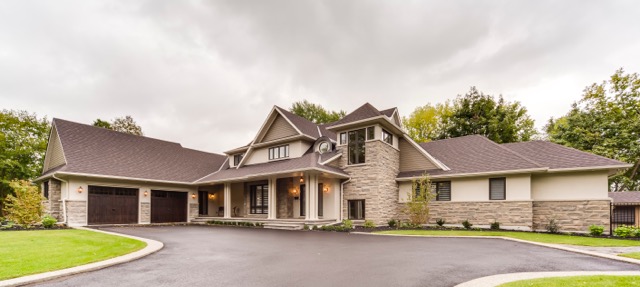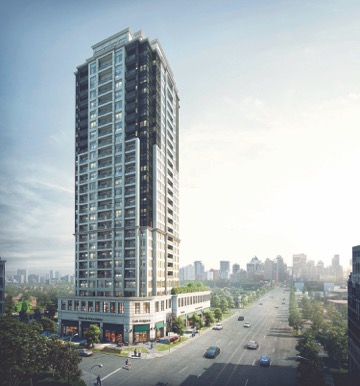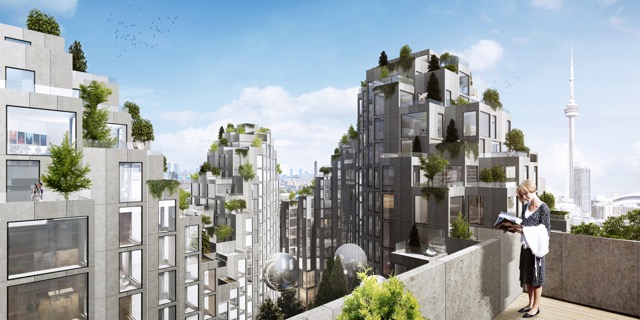All posts by Giulio
Above all else
Highest wooden building in the world to be built in Amsterdam
Beginning in 2017, construction of the tallest timber tower in the world will get underway on the banks of the Amstel River in Amsterdam.
Called HAUT – drawing inspiration from haute couture or designed, customized architecture – this 21-floor building will include 4,000 residential units, plus business and retail areas.
But it’s the innovative wooden high-rise construction and energy-generating façades that make HAUT a protoype for innovative and sustainable building. Cross-laminated timber will be used to build the tower, with softwood from sustainably-managed forests in Europe.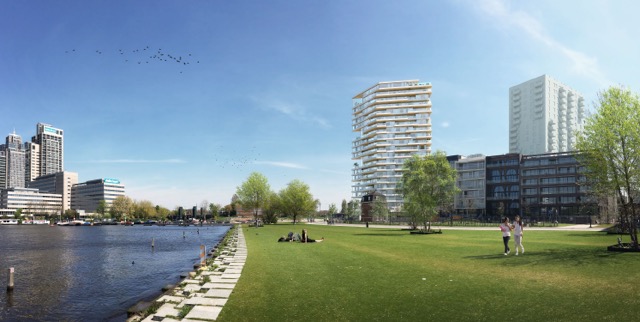
Due to the large storage capacity contained with CO2, using wood in this structure will store approximately three million kilograms of carbon monoxide, developers say. The façade of the building will include energy-generating panels across an external area of 1,250 square metres, waste water will be collected and decontaminated and garage space willl be equipped for electric vehicles.
The project ties in nicely to Amsterdam’s plan to achieve a net zero carbon footprint through construction, with an eye on achieving a BREEAM (Building Research Establishment Environmental Assessment Method) label.
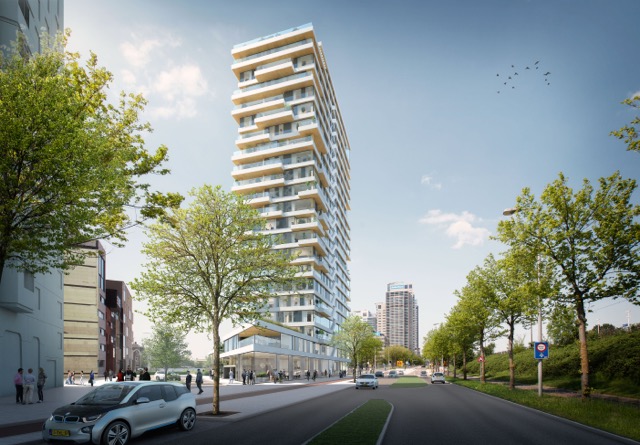
The City of Amsterdam selected Team V Architectuur to design and develop the project, and other key players on the team include urban developers Lingotto, Nicole Maarsen, ARUP and brand partner NLE (Netherlands Energy Company).
The building has been designed to provide buyers with various choices – ranging from unit sizes, to the number of floors, layout and positioning of double-height spaces, outdoor loggias and balconies.The appearance of the building will be enhanced in several ways. There are exceptional views of the surroundings utilizing large floor-to-ceiling windows and ample terraces with spacious balconies. The balconies, it should be noted, are designed as cantilevering structures that appear to be placed in a random pattern.A triangular base is designed to function as a green area during the cooler months and will host community gardening programs. An innovation lab will be located at the tower’s ground floor, which will be a leading destination for energy innovations.The main building will use timber in the form of pre-fabricated panels. A load-bearing wall construction will be used for the tower’s structure, while wall and floors will be made of cross-laminated timber.
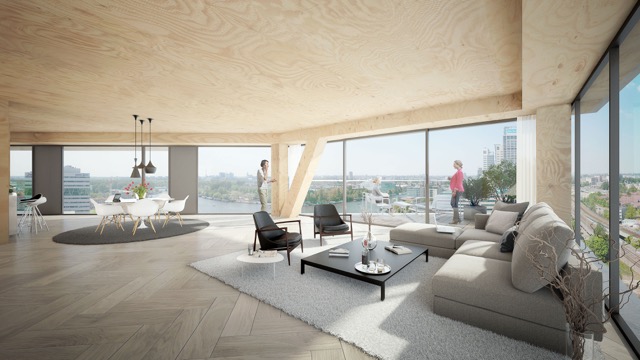
Concrete will be used sparingly – to construct the basement and for the connecting path between the basement and the wooden high-rise structure. Additionally, on a smaller scale, certain areas of the ground floor and first floor structure will also require concrete as the construction material.The building’s façade will be completed using glass, aluminium and concrete.
Web / haut.nl/en
Rainforest in the desert
Dubai’s Rosemont Hotel and Residences to feature stunning artificial world
It’s common knowledge that Dubai, on the southeast coast of the Persian Gulf, is well-known as a business hub extraordinaire with a dry desert climate.
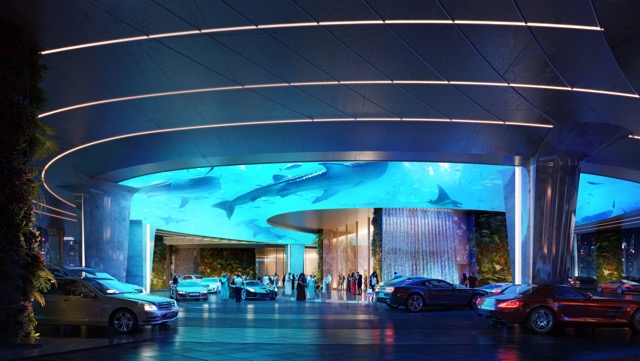
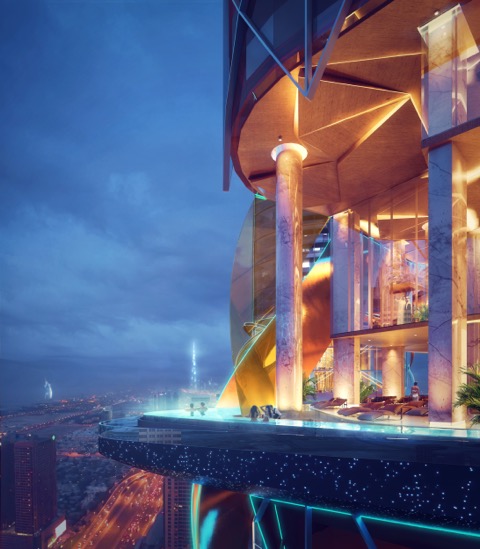
But by 2019, visitors to this iconic city of skyscrapers and high-rises will find a much different attraction should they decide to stay at the Rosemont Hotel and Residences, currently under construction. It reflects a modern city where innovative development shapes the destination.
This five-star hotel, a two-tower property owned by the Saudi Arabia-based Royal International group, will feature a 75,000-square-foot outdoor rainforest, complete with an sand-less beach and splash pool. Moreover, it will also provide an adventure play area for children, a trampoline park, laser tag area, and indoor bowling alley.
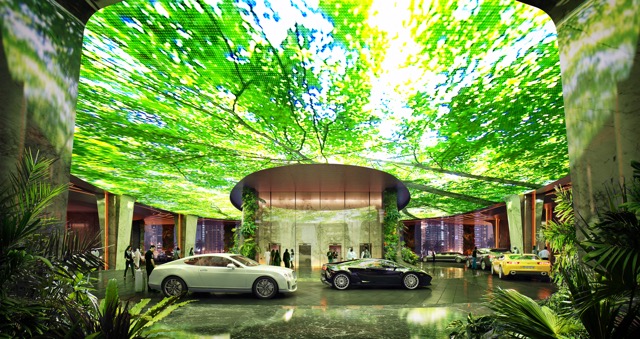
The first of its kind in the United Arab Emirates (UAE), the hotel will be spread over 13,000 square metres, and many of the extras will be developed inside a five-storey podium that will serve as a pedestal between the two towers, each 53 storeys high.
Designed by ZAS Architects Dubai, this $550-million (U.S.) creation goes way beyond the norm when it comes to unique offerings. There will be robotic luggage handlers and a glass-bottomed sky pool that lights up at night, but its pièce de résistance will be the man-made rainforest.
Besides the splash pool, there will be a ‘prehistoric marsh’ with a ‘tropical mist’ spraying through trees, waterfalls, streams, a rainforest café and trails. This will be done by using stored recycled water to create the humidity, mirroring a real tropical rainforest environment.
Designers also tout the site’s ‘sensory rain system that will create a 360-degree experience, providing the sensation of being surrounded by rainfall without actually getting wet.’
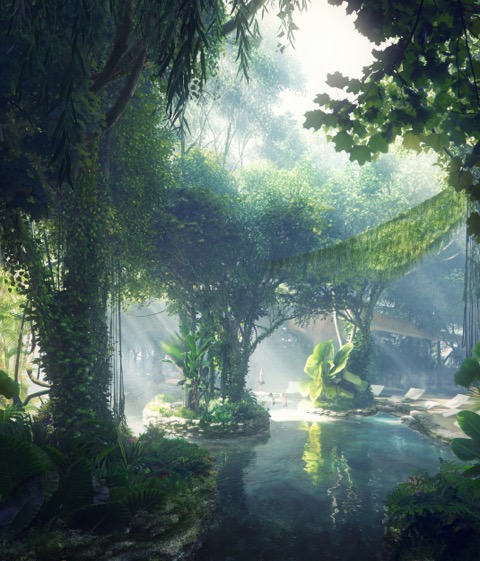
Besides the obvious wow factor, it should be noted that the Rosemont Hotel and Residences is actually combining advanced design, digital technology and the natural world. It’s a first-of-its-kind hybrid, operated by Hilton’s Curio Collection.
Set against the dynamic backdrop of an ever-evolving skyline, Rosemont’s architecture will capture a contemporary Dubai. Animated and dynamic, the bold façades will reflect the city’s vibrant pulse. Inspired by reflection, light and texture, Rosemont’s evocative design is expected to transport guests into nature’s most exotic destinations – from the lush tropical rainforest to an alluring digital underwater world, or cosmic experience.

The hotel tower is conceptualized as a flowing river, with the façade’s dynamic lighting enhancing the architecture. Wrapping around the tower, lighting will spiral around the podium, which, in turn, will shape the dynamic form. Representing shells and pearls, moving lights will illuminate the tower’s apartment area in a pattern inspired by atomic, orbital rings.
After spiraling around the hotel’s façade, lighting will then dive directly into the projected pool from above, and continue to flow through the bottom of the pool into the lower level, highlighting canopies.
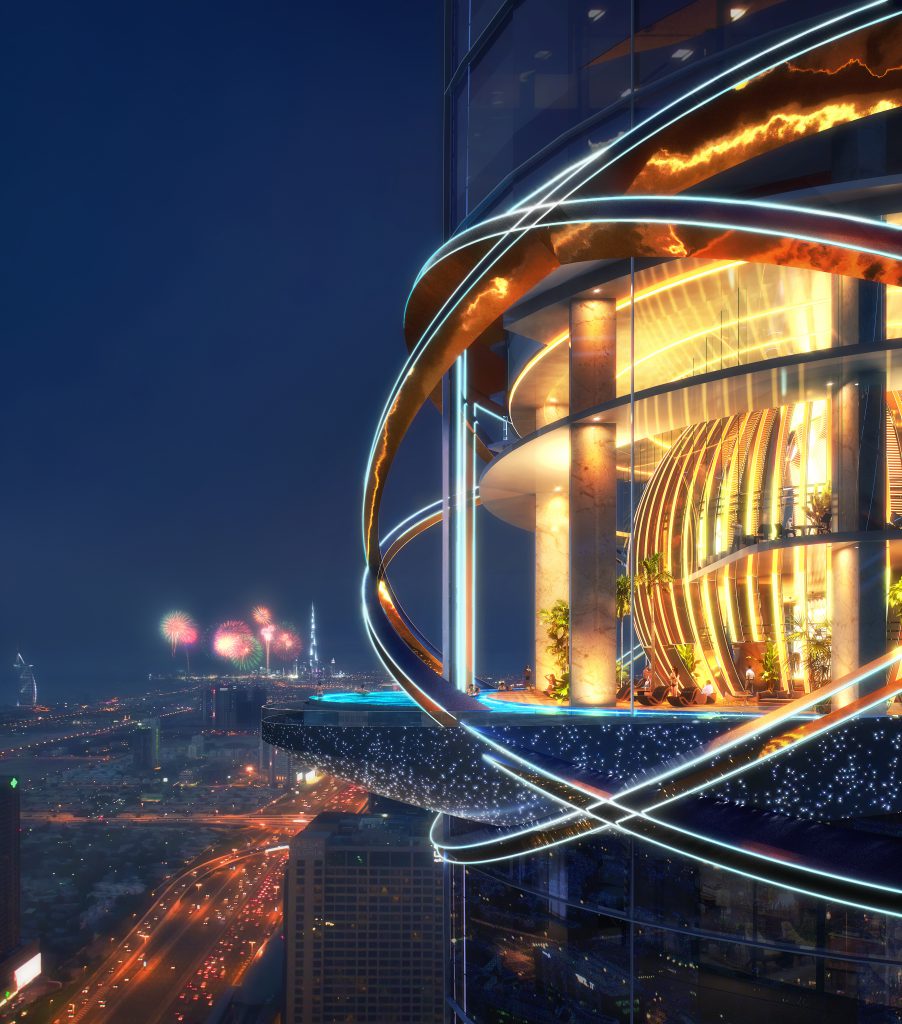
All in all, this should mean a breathtaking experience for guests. And that sensory experience will begin immediately upon their arrival as the advanced technology will transform the upper ground floor drop-off area with ever-changing 3D projections, ranging from lush rainforests to underwater scenes.
Two separate, opulent lobbies accessible from the upper ground floor drop-off area will provide exclusive and private access for guests. Visitors to the rainforest and entertainment area will arrive from a third, separate lobby, connecting to the entertainment podium.
Steps inside the upper ground-floor hotel lobby, guests will be welcomed by robotic luggage handling, digital waterfalls, and evocative hi-tech projections. High-speed elevators will transport guests to check-in on the 26th floor sky lobby, with magnificent views of the Gulf and city beyond. A floating kinetic sculpture will be suspended above, with shimmering LEDs moving slowly to create a mystical, ever-changing visual centerpiece.
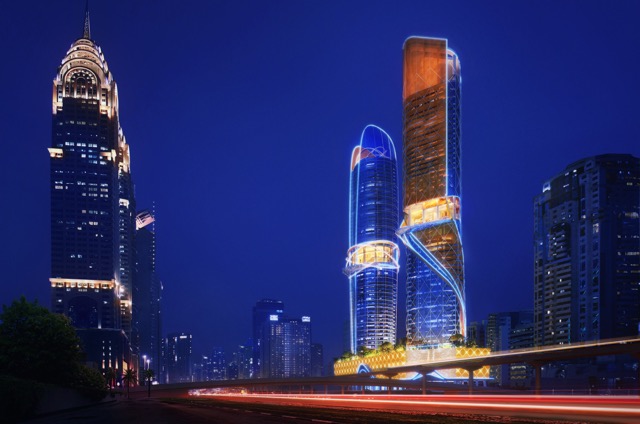
Visitors will have a choice of accommodation options, from executive rooms to junior suites to designer suites, with a 6,300-square-foot presidential suite topping things off. Bars and rooftop lounges, many with exclusive features, will also be available, along with event space, meeting rooms, private pools, aqua massage, wet spa, private treatment rooms and ice room.
Promoted as a new global hospitality brand, there’s little doubt this project will be quickly recognized as a unique ultra-luxury urban resort destination.
Best of both worlds
Sharon Village combines lifestyle of uncompromising style and heritage with convenience
When it comes to a perfect GTA lifestyle, Sharon Village offers the best of both worlds.
Located just 30 minutes north of Toronto, this Vogue Development Group community oozes historic charm with a relaxing neighbourhood vibe – all the while providing access to beautiful parks, shopping and schools, plus close proximity to the Leslie Street Heritage District.
And with a variety of styles and sizes, the affordable homes of Sharon Village literally have something for every homeowner’s wish list.
Named after the Sharon Temple national historic site, the development is an ideal combination of natural ambience and big-city convenience. Located at Mount Albert Street and Leslie Road, Sharon Village is surrounded by peaceful greenspace, yet only minutes away from many major amenities.
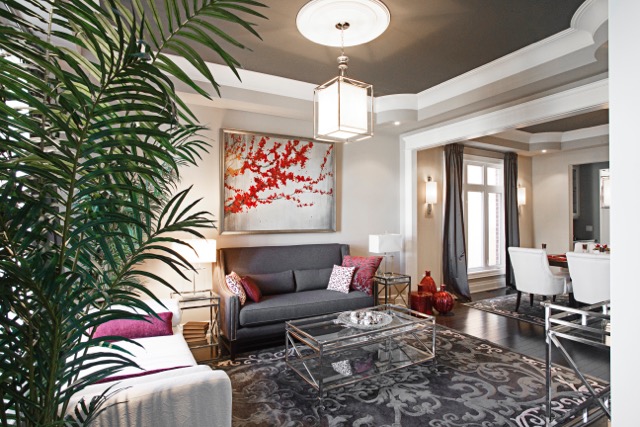
The link to the past can’t be understated. Back in the 1820s, theVillage of Sharon was a small community founded by Quakers who used simple tools to craft buildings with skill and artistry; buildings that still stand as a dramatic architectural testament to a society created on the values of peace, equality and social justice.
Sharon Village fits right into the mix, with distinctive architecture in an exceptional setting.
The interiors of each home incorporate all of today’s mo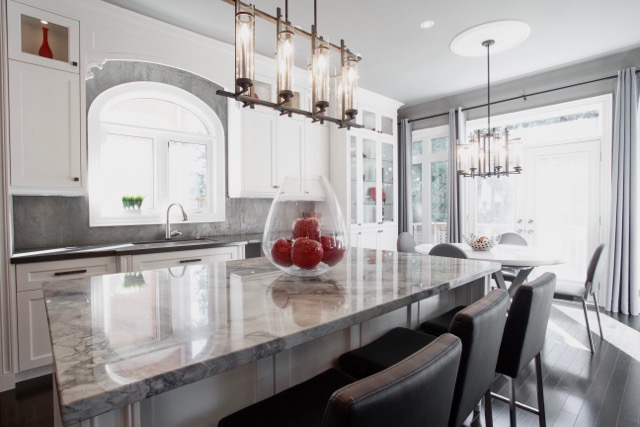 st popular trends, with open concept main floor plans, chef-inspired kitchens, cozy family rooms and spacious family bedrooms with spa-inspired ensuites. Home sites are situated on quiet streets and crescents, with limited thoroughfare traffic. Boasting refined, charming brick exteriors with large windows, there are single and double car garages, a well.
st popular trends, with open concept main floor plans, chef-inspired kitchens, cozy family rooms and spacious family bedrooms with spa-inspired ensuites. Home sites are situated on quiet streets and crescents, with limited thoroughfare traffic. Boasting refined, charming brick exteriors with large windows, there are single and double car garages, a well.
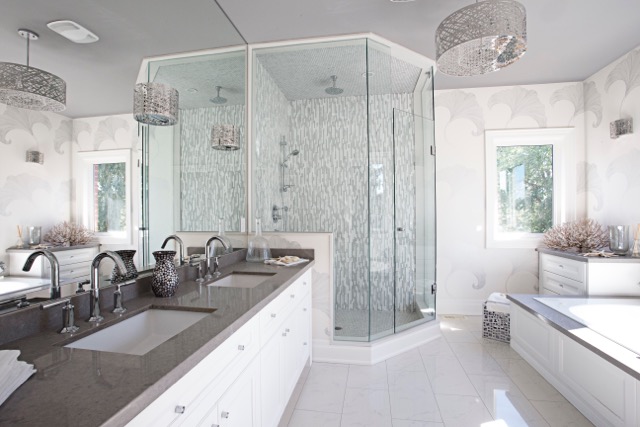 Yes, Sharon Village offers a peaceful retreat from the bustle of downtown Toronto, but getting back and forth to work should be an easy commute. With close proximity to both highways 400 and 404, there are also nearby GO stations in Newmarket and East Gwillimbury.
Yes, Sharon Village offers a peaceful retreat from the bustle of downtown Toronto, but getting back and forth to work should be an easy commute. With close proximity to both highways 400 and 404, there are also nearby GO stations in Newmarket and East Gwillimbury.
All homes, for starters, will be Energy Star qualified, which assures adherence to Natural Resources Canada’s energy-efficient guidelines. Not only that, but all homes will be constructed in accordance with the Town of Gwillimbury sustainability guidelines and include warranty protection.
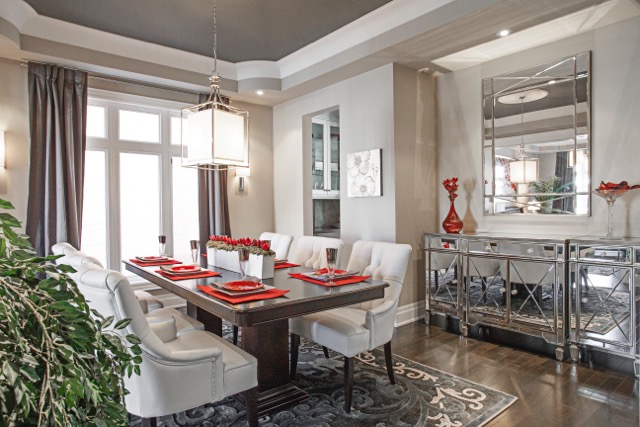
The list of energy-efficient and water-conservation features is lengthy and impressive, and includes:
- Energy Star qualified natural gas-fired, power exhaust hot water tank to be installed on a rental basis;
- Energy Star qualified high efficiency, forced air, direct vent, natural gas furnace with programmable thermostat;
- Ducting sized to accommodate future installation of central air conditioning;
- Exterior frame fully insulated to R27, including R5 sheathing. Basement foundation walls insulated with R20 insulation from above the basement slab. Entire house sealed with air/vapour barrier to minimize air infiltration and increase energy conservation;
- R31 energy saving spray foam insulation in garage ceiling (with habitable space above) and overhangs;
- R50 blown insulation in attic;
- Comprehensive air-seal package on all exterior doors and windows with polyurethane spray foam;
- Extensive caulking for improved energy conservation and draft prevention;
- Blanket insulation complete with vapour barrier in basement;
- Low-flow aerators on WaterSense lavatory faucets;
- Low-flow WaterSense showerheads on all showers;
- WaterSense water saving toilets;
- An HRV System (Heat Recovery Ventilator) distributing fresh air throughout the home;
- Circulation hot water delivery system;
- Furnace mounted whole-home water efficient humidifier;
- And, solar conduit rough-in.The attention to green and sustainable detail extends to all features throughout each home, from Energy Star maintenance-free Low E argon vinyl casement windows to washable Benjamin Moore quality paint colour (low VOC).
Kitchens feature pre-finished kitchen cabinets, double stainless steel ledge back sink with single lever pullout faucet, and post-formed laminate countertops. There will be 100-amp electrical systems with circuit breakers and an array of pre-wiring features. Bathrooms have a myriad of luxurious and practical offerings, as do floors throughout the houses. Plumbing and heating notables include tankless water heaters and temperature balancing controls.
Web / voguesharonvillage.ca
Vogue is a family-owned and operated business that has over 50 years experience creating spectacular residences throughout Southern Ontario. The success of the Vogue Development Group is rooted in the commitment to hard work, quality craftsmanship and exceptional customer care that the owners and employees of its family-operated business demonstrate on a daily basis. The Vogue Development Group is committed to building homes of the highest quality, not the highest quantity of homes. When making a new home purchase, Vogue’s experienced and knowledgeable team is with you every step of the way to ensure that you have the best possible purchasing experience. It’s through this steadfast commitment to customer service that Vogue has earned a reputation as one of the premium builders in the GTA.
Living green
Times Group continues to lead the way with its environmentally-friendly Key West condo project
With a track record that speaks for itself, Times Group’s commitment to environmentally sustainable development is second to none.
A premier name in the industry with 25 years of business and a record of excellence across the real estate spectrum of the Greater Toronto Area (GTA), Times Group sets the bar particularly high when it comes to green building.
That was borne out when the company built the first LEED-certified residential condominium in Markham, which is a testament to its dedication to both the environment and the community.
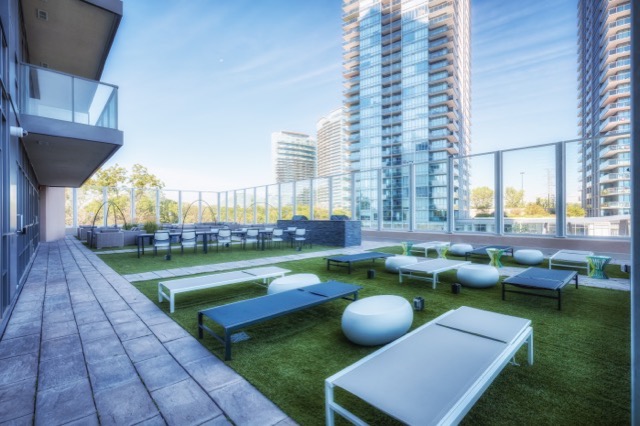
But now, with the Key West condos on the Etobicoke waterfront, Times Group is building with an even greater green commitment. There are more energy-efficient features, environmentally-friendly materials and construction practices that minimize waste.
So much so, it turns out, that the project will be a candidate for Toronto Green Standard Tier 2, which is the industry’s highest green building standard.
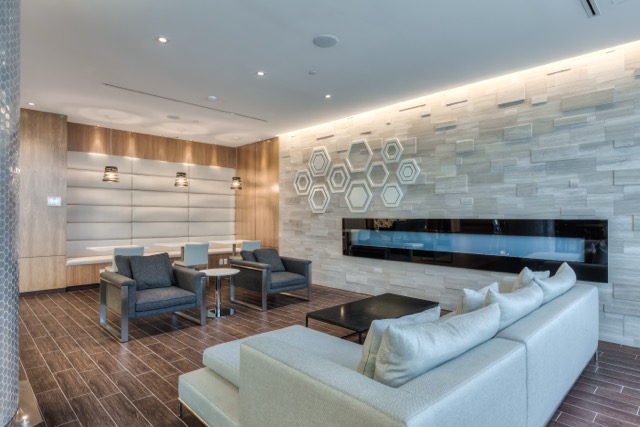
A firm commitment to the environment and green living is a cornerstone of Times Group’s green building philosophy. As an early adopter of York Region’s Sustainable Development Through LEED Program, all Times Group residential projects in York Region have important environmental benefits. From smart site planning to energy conservation to waste reduction to water savings, Times Group is leading the way in environmental stewardship across the GTA.
Inspired by core family values, Times Group has become a leading player in the land acquisition, planning, design, development and construction of premium-quality commercial and residential properties. With a focus on exceptional quality and enduring value, Times Group is actively engaged in the development of high-rise condominium projects, distinctive homes and condominium townhouses in the GTA.
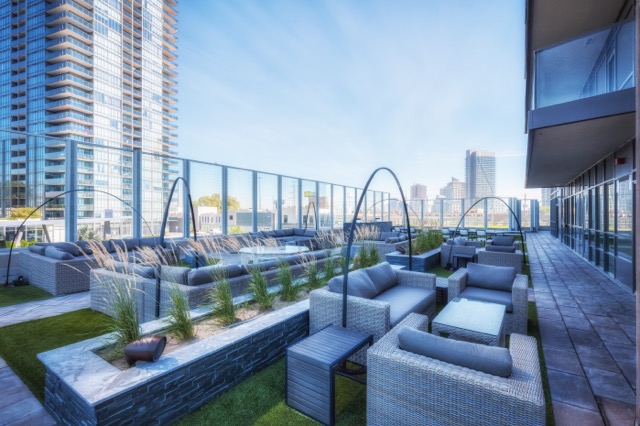
Every Times Group project is distinguished by an integrated planning process, a meticulous attention to detail and a commitment to enduring value.
That painstaking approach continues with Key West, where the project manager is Tony Ma and Sirous Sayad is site superintendent.
When it comes to energy efficiency and green features, Key West stands alone. A number of examples include:
ENERGY EFFICIENCY
1) Double glazed, Low-E windows with argon gas fill to provide added comfort and reduce heating and cooling costs;
2) High pressure, low-flow shower heads to reduce energy consumption for domestic hot water without sacrificing bathing comforts;
3) Energy Star appliances to reduce electricity use;
4) Sub-metering for individual allocation of electricity costs;
5) Best Practices Commissioning of major mechanical equipment by third party energy management firm to ensure that systems operate at optimal performance levels;
6) Occupancy sensors on lighting in non-essential common areas;
7) CO2 monitors in the parking garage to activate air-handling equipment when needed (versus around-the-clock) saving money on fan operation;
8) And on-site treatment of storm water to remove particulate matter.
INDOOR AIR QUALITY
1) Continuous fresh air provided directly to occupied units;
2) Interior latex-based paints, adhesives & sealants certified by the Environmental Choice Program to ensure ultra low emissions of volatile organic compounds (VOCs);
3) Indoor Air Quality management plan during and after construction to ensure healthy living space when you move in and for the life of the building;
4) Adhesive-free hard surface flooring for easy maintenance to remove dust and allergens and reduce off-gassing;
5) And best practice ventilation and air sealing practice to eliminate transfer of tobacco smoke between suites.
WATER EFFICIENCY
1) Low flow, high pressure shower heads and faucets;
2) Dual flush water efficient toilets;
3) Water efficient landscaping and storage of rainwater to eliminate consumption of potable water for irrigation;
4) Front loading Energy Star washing machines (use less water and detergent);
5) And individual suite metering will provide incentive for occupants to reduce consumption.
OTHER ENVIRONMENTAL FEATURES
1) Walking distance to public transportation;
2) Diverting construction waste to reduce landfill loads;
3) Recycle facilities that permit convenient separating and disposing of recyclables;
4) And additional secure bicycle storage space conveniently located.
Key West carries on with the company’s tradition of excellence. Winner of many prestigious industry awards, Times Group has been honoured with the BILD Award for Green Builder of the Year – Highrise in recognition of its green building philosophy.
Times Group began by building custom homes in North York, Ontario in 1987. With its singular focus on quality craftsmanship and professional service, the family-run business thrived and soon expanded into commercial development, focusing on commercial condominiums.
Since then, the company has virtually formed the skyline of lower Richmond Hill, having built extensively along Highway 7, between Bayview Avenue and Leslie Street. The company’s flagship and highly successful commercial development, Times Square, put Times Group squarely on the map as a major developer of repute and earned Times widespread acclaim.
At the turn of the 21st century, with a firm footing in the arenas of commercial development and home building, Times Group focused its formidable skills, resources and strengths on highrise residential condominium development. Here, again, the core family values of quality, trust and tradition propelled the company into completing one successful condominium project after another.
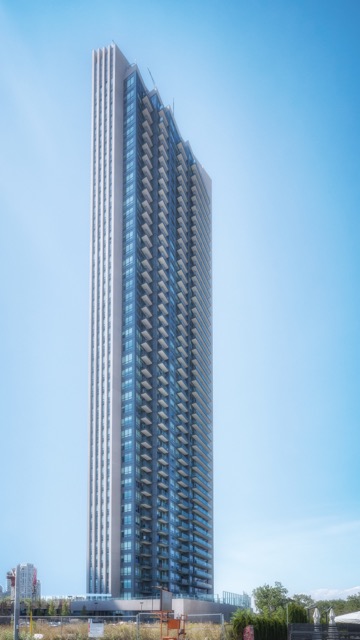 Today, Times Group leads the development industry with over 20 exquisitely designed residential condominium residences in the Toronto downtown core, North York, Richmond Hill, Markham and, most recently, Key West in Etobicoke. With these and more elegant condominium communities coming soon, Times Group continues to arouse great excitement with its stylish and sophisticated projects.
Today, Times Group leads the development industry with over 20 exquisitely designed residential condominium residences in the Toronto downtown core, North York, Richmond Hill, Markham and, most recently, Key West in Etobicoke. With these and more elegant condominium communities coming soon, Times Group continues to arouse great excitement with its stylish and sophisticated projects.
Web / keywesttorontocondo.com
It’s time for a change – a very slight change – to our magazine’s brand name.
Beginning with the Fall 2016 issue, Green Building & Sustainable Strategies transitions into something we feel is more appropriate – Green Building + Architecture.
The decision to shake things up a bit makes perfect sense to us. Since the magazine’s inception, we have steadily forged solid relationships with key international architectural figures.
In past issues, for example, we have featured a veritable who’s who of renowned architectural firms from Canada and around the world, including Frank Gehry, Vince Callebaut Architectures, James Law Cybertecture, MVRDV, MAD, RAFAA, Gentler, Heatherwick Studio, WZMH Architects, Buro Ole Scheeren, Farrow Partnership Architects, Superkul Inc, Arquitectonica, Castro Melo Arquitectos, Asymptote Architecture, Steven Holl Architects, B+U Architects, BIG, Richard’s Architecture & Design, J. Mayer H. Architects, Studio Nicoletti Associate, Atenastudio, LAVA, Studio 505, Cachoua Torres Camilletti, Wilkinson Eyre Architecture, Giancarlo Zema, ZAS Architects, Sou Fujimoto, Spark and Ateliers Jean Nouvel
More and more, we found our editorial themes revolving around sustainable architecture and our bread and butter – the green construction industry. So that will continue. We’ll have the same informative profiles across all building sectors in Ontario, Canada and the world.
We will still present in-depth news and features about the industry’s many innovations, everything from new green building materials and architectural breakthroughs, to the latest regulatory challenges and business trends.
And, yes, we will still engage thinkers and industry players as we explore recipes for success.
We hope you’ll carry on with your support for what we bring to the table, and embrace the new, improved format where we’ll provide even more emphasis on sustainable architecture; construction where only renewable resources are utilized throughout the process of design, construction and operation.
We’ll continue to invite all architects to submit their sustainable projects for publication. And we look forward to featuring some of the most notable architects and their work, where the focus is on reducing environmental footprints. Enjoy.
Attention to detail
Pine Glen Developments values quality while providing top workmanship at fair market price
Quality, quality, quality – the word is worth repeating when talking about Pine Glen Developments.
In every discussion about the Oakville general contractors – whether with partners or customers – that same description comes up again and again.
“Our focus is on a customer service-driven company,” says Pine Glen project manager Eddie Juric. “We aim to serve our clients well, and form comfortable personal relationships in order to provide the best service possible to satisfy their needs throughout any project.”
Juric says Pine Glen Developments – serving the Greater Toronto Area (GTA), plus Mississauga, Oakville and Burlington – provides top-quality workmanship at fair market prices.
“The quality of our work is beyond compare and is the cornerstone of our business, which specializes in custom home building and home renovation,” he says.
Pine Glen Developments – a finalist in the 2015 Building Industry and Land Development Association (BILD) Best Renovation, $300,000 to $500,000, and nominee for the 2015 BILD Best Custom Home – leaves no stone unturned when it comes to service.
“Our initiatives are always cost-effective,” Juric says. “We value education above all else and pride ourselves on being able to provide answers to client questions regarding any part of their scope of work. Our staff will answer any question, ranging from design to construction to available products.”
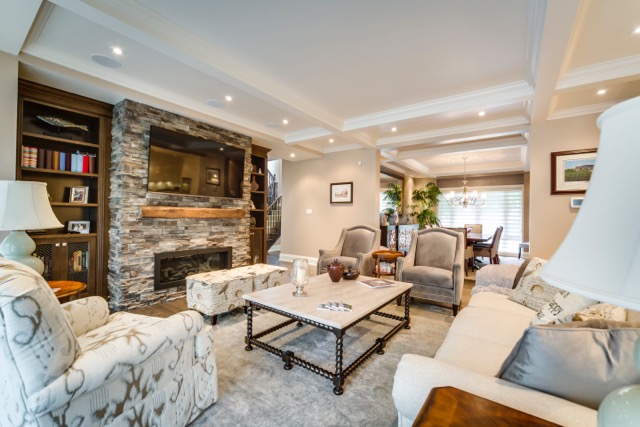
While general contracting is their bread and butter, Pine Glen also can provide basement, bathroom or kitchen renovations, along with home additions. Consultations are free.
If a client is looking to finish or renovate a basement, Pine Glen Developments uses top quality products and utilizes an experienced and talented trades’ team to ensure that it’s finished with top quality workmanship.
Pine Glen Developments has been involved with quality additions and extensive bathroom renovations in the Greater GTA for years. And all trades have worked with them over a long period of time, as well, and understand what level of quality is required. That same attention to detail and quality extends to kitchen renovations/remodeling, with Pine Glen Developments ensuring that each project is handled with the highest standards of professionalism.
Green building traits are also evident in their offerings. Standard items, Juric says, are LED lighting, water management, high-efficiency components and SMART technology.
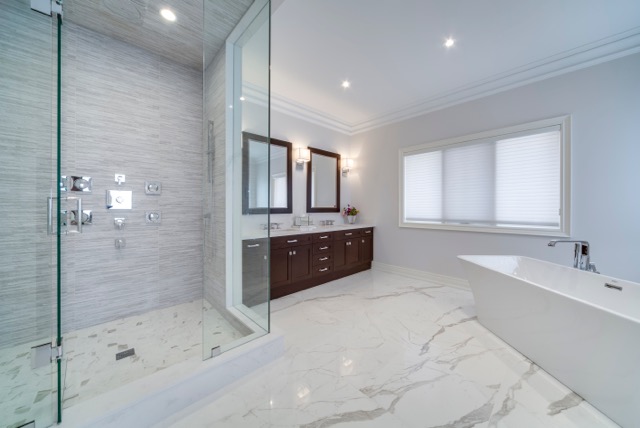
Current new builds include 15 Shady Lawn Court in Mississauga, 374 Belvenia Road, 534 Ann Avenue and 3099 St. Clair Ave., all in Burlington.
The St. Clair Ave. example is the newest custom home project from Pine Glen Developments and features high quality finishes and custom upgrades. This Cape Cod style home has a spacious kitchen and is filled top to bottom with refined finishes, from the basement to the bedrooms. Natural light fills this home through the many large windows, while the gorgeous exterior’s lower half features an elegant stone finish.
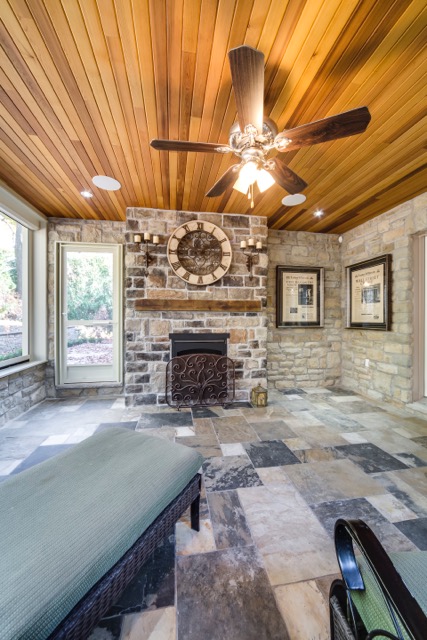
For each custom project, however, there are varying styles and designs, all professionally orchestrated by Pine Glen Developments’ team – and outlined in detail on the company’s website. The Belvenia home, for example, is a two-storey with a basement, pool and cabana. The Ann Ave. build features a loft.
‘We do it all, from custom homes to high-end renovations and additions, and we take care of it all for you. We offer professional leasehold improvements and condominium services. Our team is efficient, reliable and we provide the highest quality results in the time frame your business requires. View our list of services and let our team of professionals take care of your construction needs.’ – Pine Glen Developments.
Web / pineglen.ca
The straight goods on green building and energy-efficient home design
By William Hirsch
Green building is the catch phrase for the creation of houses that are energy-efficient and environmentally responsible in their design and construction.
I’m old enough to remember the first Earth Day in 1970 when we called green building and sustainable design “ecology.” While the names are updated, the principles are the same. Some technology has improved, and the motivation and popularity has strengthened, but the goal of designing and building houses that consume less energy to heat and cool, and demand fewer natural resources to build, particularly natural resources that cannot be replenished, is still what it is all about.
To me, there are four parts to building “green.”
- Design a house that uses less energy to heat, cool, light, and maintain;
- Use materials that consume less energy to produce and transport, are non-toxic, and can be recycled or safely disposed of when no longer useful;
- Use building products made from materials that are not limited in supply and are quickly and easily regrown, reproduced, and replaced;
- And use energy sources that are readily replenished and have an unlimited supply.
An energy-efficient home is one that, due to its design, naturally tends to stay at the right temperature, is better insulated, tight, and does not leak air.
An energy-efficiency home begins with its proper placement on the land. Consideration must be given to solar orientation – where the sun rises, sets, and is situated at midday. The design should factor in protection from the winter winds and natural ventilation from the summer breezes.
The crazy part is that positioning the house optimally with regard to the sun, wind, and shape of the land usually does not cost anything extra, except a bit of thinking. Yet much of what you read about green building and energy-efficient design says little about the siting of the house and the intrinsic energy-efficient characteristics of the building design. And it’s not rocket science. It is basically the thoughtful positioning of the house on the site and the arrangement of windows and roofs to let the house stay cooler in the summer and warmer in the winter, naturally.
Enhanced insulation is critical. Actually, insulation is relatively inexpensive compared to the cost of other parts of a house. And it pays the biggest dividends. Additional insulation will reduce the heat loss in winter and heat gain in summer just as a heavy coat keeps you warmer than a thin one.
Making your house tighter by reducing the amount of outside air that infiltrates through walls, roofs, doors, windows, and foundations is critical. Did your parents ever yell: “Close the door. We’re not heating the street.” Mine sure did. The sum total of the leaks in the typical house have the same effect as leaving one door open. If you want an energy-efficient house, close the door by limiting the air leakage with a tight building envelope.
Metal roofs with a ventilating air space, properly-sized roof overhangs that shade exterior walls, and even fan-induced attic ventilation, can greatly reduce air-conditioning needs by keeping your roof, walls, and attic cool without using much electricity.
Look for the Energy Star logo when choosing appliances and equipment. Energy Star is a standardized home evaluation system used to gauge the efficiency of a home. If you are seeking an Energy Star certification, you gain points by using Energy Star-rated appliances. Getting an Energy Star rating could possibly earn you a lower electrical rate and a tax credit. Check with your power company and tax advisor on this.
Use materials that consume less energy to produce and transport, do not contain off-gas toxins, and can be recycled or safely disposed of when no longer useful. Green building is a holistic approach to design and construction. The so-called embedded energy involved with the manufacturing and transport of the building materials needs to be considered. Of course, products that last longer will probably be more “green” than those that have to be replaced frequently.
Look for locally manufactured products and materials. I always wince when I see those bottles of water that are imported from Fiji and wonder how much fuel is burned to bring me a bottle from the other side of the world that contains the very same thing I can get right where I live. The same holds true for your building products.
Did the manufacturing of the product use massive amounts of energy? The less energy used, the greener the product, with one major consideration. Some materials can be “green” while still requiring a lot of energy to produce. Bricks require high heat to make, but they have a long useful life and require virtually no maintenance. If bricks are unpainted, they can be recycled into other materials. Steel is similar with a long life and often is made from recycled steel.
Green builders use building products made from materials that are not limited in supply and are quickly and easily regrown, reproduced, and replaced. Concrete is made from earth’s virtually unlimited supply of sand, gravel, and cement. Clay and porcelain products are similarly “green’ so long as they contain no toxic materials that pollute during manufacturing.
We often hear about bamboo in this regard. It is a fast-growing plant that is being used in flooring, fabrics, and other products. But don’t overlook wood as a versatile “green” building material. Although no one likes to see trees cut down, trees do grow back. But select your sources for wood. Only wood produced in managed forests and harvested at sustainable rates qualifies as a green and renewable resource. Look for certifications of managed planting and cutting practices from organizations such as the Forest Stewardship Council (FSC) to be sure. One other “green” aspect to wood is that trees go a long way toward capturing carbon dioxide from the atmosphere thus helping reduce the increase in CO2 in the air.
 Use renewable energy when possible. Photovoltaics, or electricity-producing solar panels, can provide all or part of your electrical needs, depending on your geographical location. Solar water heating and geothermal equipment may still use electricity to run, but at a lower rate than conventional systems. In some locales, excess electricity you generate beyond your consumption can be sold back to the power company for a credit thus cutting your electric bill.
Use renewable energy when possible. Photovoltaics, or electricity-producing solar panels, can provide all or part of your electrical needs, depending on your geographical location. Solar water heating and geothermal equipment may still use electricity to run, but at a lower rate than conventional systems. In some locales, excess electricity you generate beyond your consumption can be sold back to the power company for a credit thus cutting your electric bill.
In certain parts of the world, wind power can be efficiently utilized. While there is a high up-front cost with wind and solar systems, the payback is long. But the personal gratification from being environmentally responsible may be worth the added cost
Green building is the responsible way to build. Some green building methods cost little or no extra money to implement. Others cost money up front but can pay you back in a reasonable time frame. Others are too costly to be justified in economic terms, but you still might want them for the intrinsic benefit of being a good steward of our resources and our environment. Make your choices wisely.
Web / designingyourperfecthouse.com + about-home-design.com
William Hirsch, author of the best-selling book Designing Your Perfect House, is a member of the American Institute of Architects, the National Council of Architectural Registration Boards, and the former president of the Delaware Society of Architects.
The role of new development in the future of green cities
How architecture and engineering promote sustainable lifestyles in urban centres
Developers build for the future. But only recently has sustainability become a major factor for the industry. Over the last decade, developers experienced a dramatic shift from regarding green features as optional features to following mandatory green standards. And with each passing year, technology continues to advance and introduce even more ways to increase efficiency and overall building performance while decreasing its environmental impact.
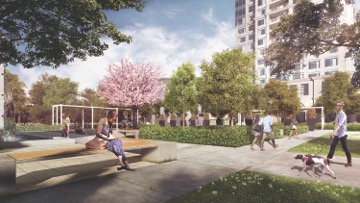
With the severity and awareness of climate change growing, and municipalities planning towards intensification, populations are prompt to adapt new habits and alter their lifestyles to find a more sustainable way of living. From taking public transit to turning off the lights when leaving a room, many are becoming more environmentally conscientious and are seeking support to make sustainable living more convenient and accessible. Finding a balance between user-driven design and environmental performance is key, a challenge which Devron’s founders are well acquainted from their backgrounds in architecture, engineering and sustainable design.
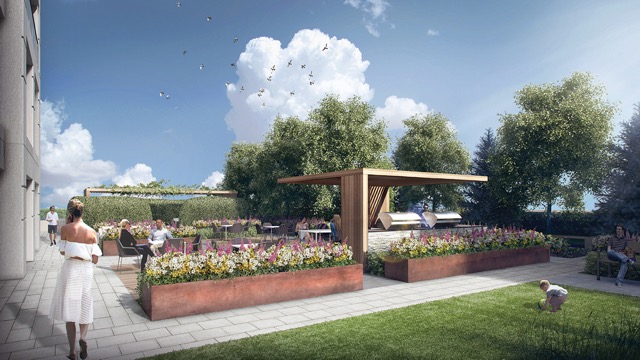
“It only takes a couple of years to construct a high rise building, but that building will continue to stand beyond my lifetime,” says Pouyan Safapour, CEO, Devron Developments. “One of the greatest responsibilities we have as developers is to ensure that the design and construction reflects our values for the future and doesn’t simply react to the current market. We can ensure that the design of the building supports a more sustainable lifestyle and, in turn, moving whole neighbourhoods and cities towards a greener future.”
Pushing beyond Green Standards
Devron Developments is constructing a remarkably sustainable 25-storey mixed-use condominium in the Grandview neighbourhood called The Vanguard. It’s currently planned for LEED gold certification, a status only 23 residential buildings in City of Markham presently hold.
While achieving such high standards for building performance is impressive, it’s the thoughtfulness behind the design that makes The Vanguard standout. The Vanguard will use 35 per cent renewable energy, 20 per cent less water than a standard building, 30 per cent regional construction material, and 20 per cent post-consumer material. The project achieves this through a combination of green features, including the installation of Tesla Destination Chargers and Electric Vehicle chargers to the building-wide water filtration system.
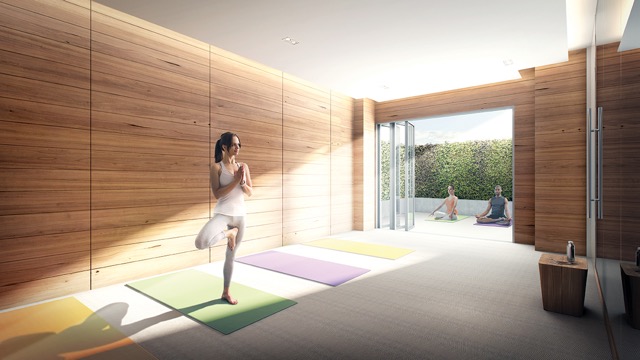
The Vanguard is also designed to maintain its sustainability mandate beyond what is required of the LEED certification. The criteria for green power requires the building to have 35 per cent of its power generated from a renewable source. The Vanguard is obligated to have a green energy provider for at least two years, but Devron also added special exercise bikes to the fitness facilities that generate energy that contributes back to the building’s grid too. These will continue to be a source of renewable energy and maintain Devron’s commitment to a holistic sustainable lifestyle.
Building for families
While condos are associated with downtown urban living, The Vanguard will be one of the first high-density developments in the predominantly low-rise residential Grandview neighbourhood. Devron recognized that potential purchasers are mostly families looking into the highly desirable neighbourhood. But with limited low-rise stock in one of the city’s hottest real estate markets on record, The Vanguard offers an incredible alternative that offers more than most traditional houses.
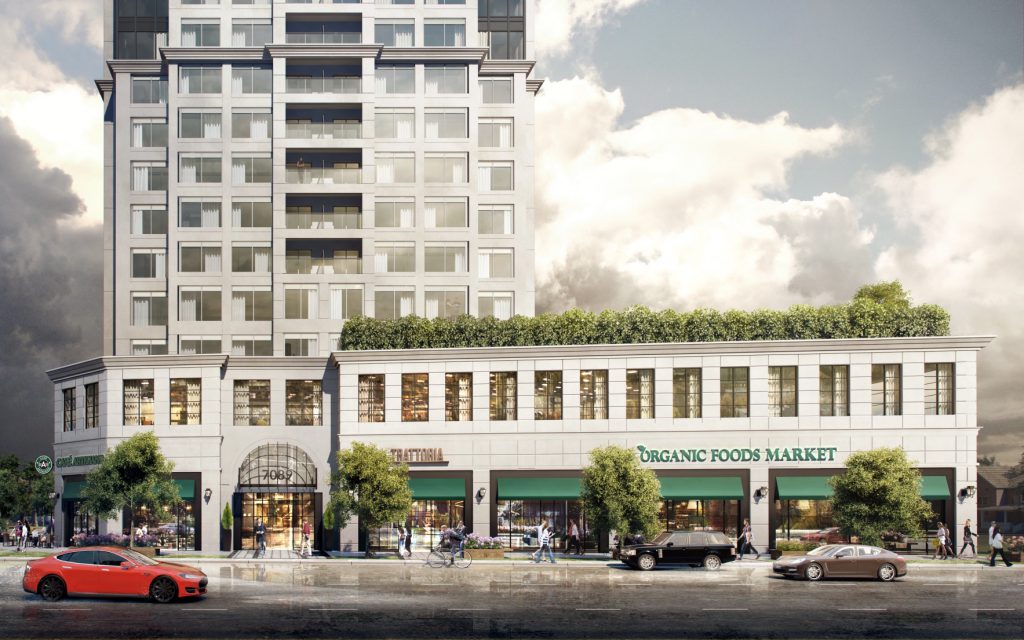 “Families want a space to raise their kids that support their values, which includes sensitivity to the environment,” says Safapour. “They want access to the outdoors to play, enough rooms in the home to give everyone a sense of privacy, and built-in features that make sustainable living more convenient. We were tasked to design a condo that offers all of that, while furthering its attractiveness by offering amenities that support a healthy family lifestyle.”
“Families want a space to raise their kids that support their values, which includes sensitivity to the environment,” says Safapour. “They want access to the outdoors to play, enough rooms in the home to give everyone a sense of privacy, and built-in features that make sustainable living more convenient. We were tasked to design a condo that offers all of that, while furthering its attractiveness by offering amenities that support a healthy family lifestyle.”
The Vanguard will have suites with up to four bedrooms and a one-of-a-kind children’s playroom complete with a playful sculptural tree. Amenities also include a stunning 7,000 s.f. rooftop terrace, kitted out with a culinary centre, community garden and lawn space. In addition to combating Urban Heat Island Effect, the terrace is planted with native species and drought resistant plants, and is irrigated using collected rainwater.
Setting the bar for the city
The right building materials need to meet both aesthetic and sustainability goals. In lieu of constructing a predominantly glass tower, The Vanguard will be clad in cast limestone, which gives the project a timeless look while also offering superior insulation.
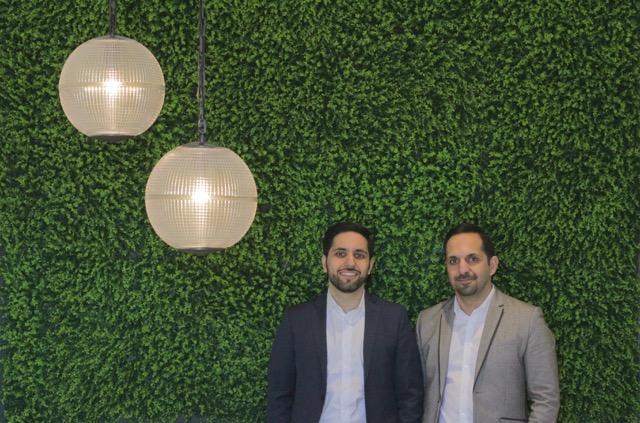 “Every green feature contributes to the project’s integrity,” says Safapour. “If the technology and resources exist to build a greener future, it’s our responsibility to lead the way. As developers, we lay down the foundation for a more sustainable lifestyle and a more environmentally conscious city. As long as the industry strives to further reduce our ecological impact, we will continue to do the same with each consecutive project.”
“Every green feature contributes to the project’s integrity,” says Safapour. “If the technology and resources exist to build a greener future, it’s our responsibility to lead the way. As developers, we lay down the foundation for a more sustainable lifestyle and a more environmentally conscious city. As long as the industry strives to further reduce our ecological impact, we will continue to do the same with each consecutive project.”
www.devron.com
A glimpse of Toronto’s future
The Bjarke Ingels Group’s King Street West design melds suburban sensibilities with cityscape
It’s not exactly a walk on the wild side, but standout architecture firm Bjarke Ingels Group (BIG) has definitely stepped outside the box with its much-heralded King Street West project.
Breaking with tradition in many ways, the design in the transitional area of Toronto will stand out among the tall towers of the central business district to the east, and the low-rise neighbourhoods in the northwest. Featuring extensive greenery, there is a direct attempt to provide a stretched-out suburban feel with dense urban look. In fact, BIG’s idea has been compared to what a youthful Moshe Safdie brought to his Habitat for Montreal’s Expo 1967.
“With King Street West, we wanted to find an alternative to the tower and podium you see a lot of in Toronto and revisit some of Safdie’s revolutionary ideas, but rather than an utopian experiment on an island, have it nested into the heart of the city,” says Ingels, Founding Partner, BIG. “It would be strange if one of the most diverse cities in the world had the most homogenous architecture.”
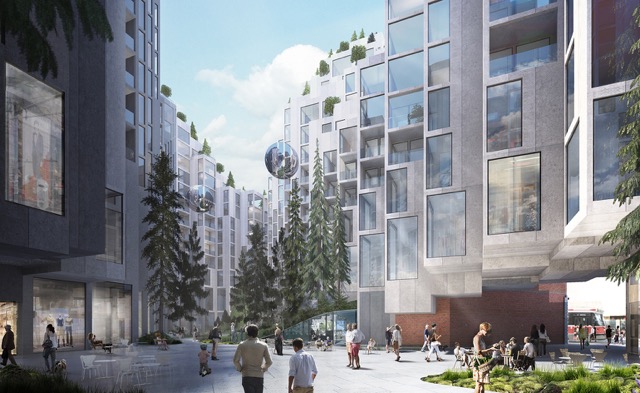
Designed for Allied Properties REIT and Westbank Corp, the residential development juts up to a maximum height of 17 storeys, but with varied rectilinear volumes stacked together. The tallest parts would be away from the street, where the restoration of heritage buildings will be featured.
In the middle will be a sprawling courtyard, enhancing the striking design and brokering an intimate communal setting. The staggered residential levels aren’t simply aesthetic in nature – they serve to maximize residents’ outdoor space, with varying views facing a mix of terraces.
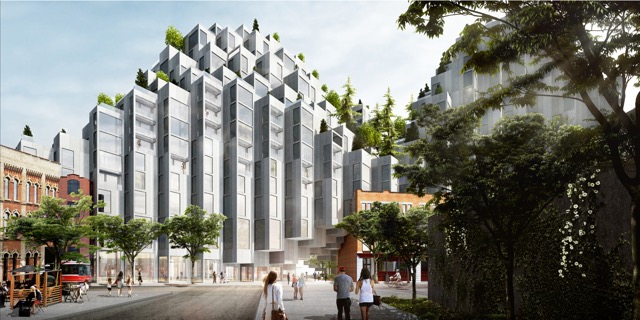
Covering about 725,000 square feet, with plans for 500 apartment units, BIG touts the design as featuring pixelated patterns, with up to a dozen different floor plans offered.
Each pixel is set at the size of a room; rotated 45 degrees from the street grid to increase exposure to light and air. At the base, pixels lift to provide 24/7 acces across the courtyard, while the roof surface is manipulated to allow sunlight to penetrate the entire building, creating space for green terraces attached to each unit.
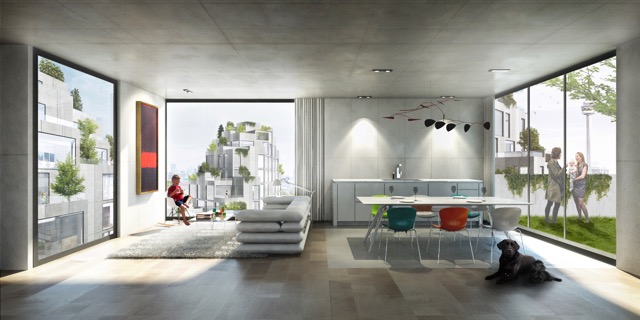
Landscape architects Public Work have been brought in to assist with the challenges of creating sustainable greenery in the rambling gardens, but the results could undoubtedly be worth the considerable effort.
Located at the meeting point of three 20th century neighborhood parks, BIG, Westbank and Allied will provide a mixed-use development with a public plaza that will create a new centre for the community while connecting the various pedestrian pathways that crisscross the area.
The building is organized as a traditional perimeter block with a public plaza in the centre. The courtyard itself is defined by two distinct atmospheres: a lushly landscaped forest paired next to an urban, hardscaped court. A BIG spokesperson says the resulting balance between these perceived opposites is a reflection of Toronto’s current state of rapid redevelopment: the union of old and new, an open community atmosphere in an intimate setting, calming green scenery within a bustling urban context.
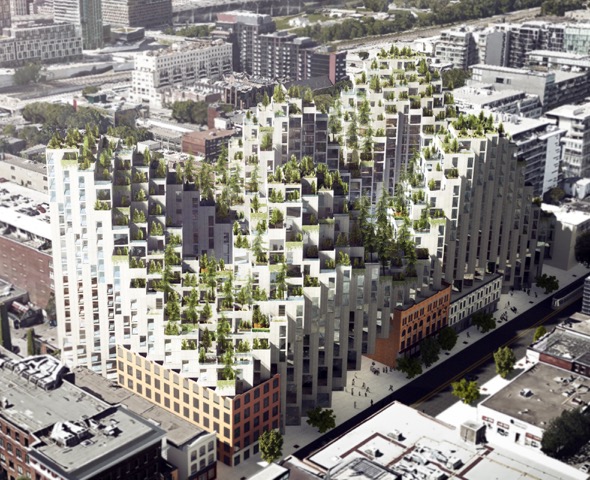
Surrounding the plaza, King Street West (currently in progress) will rise to create space for housing, retail and boutique offices – avoiding the footprints of heritage buildings that already exist on the site.
The resulting undulating façade is a connective topography – allowing increased circulation through the neighborhood while creating an abundance of green space normally reserved for the suburbs.
Web / big.dk







